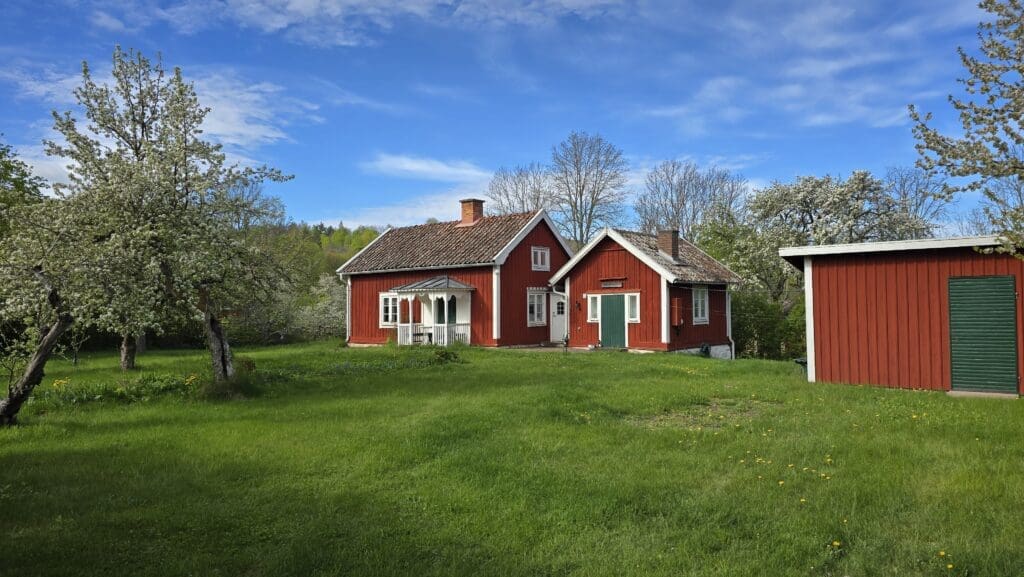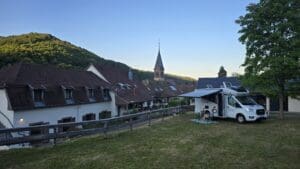Three kilometres south of Gränna you will find Röttle village, an incredibly picturesque village with a beautiful waterfall and several mills. Visiting Röttle is like taking a trip back in time to the period before the country was industrialised and urbanisation began. This little village is alive and well and all the little red cottages are used as summer houses during the warm part of the year. When we were there, they were also preparing for the Red Day that takes place every spring.




In addition to all the cute houses painted with Falu red paint, there are several hundred years of industrial buildings left in the area. As the Röttleån river flows down into a ravine, it was a perfect place for mills and there are two well-preserved mills in the area. Jerusalem's mill, which you see in the starting picture, has parts that probably date back to the Middle Ages. The newer Rasmus Mill, pictured below, was built around 1650.



In 1641, Count Per Brahe the Younger took over Röttle and industrialised the area. Water power was expanded, several smithies and armouries were built, as well as a paper mill. Paper was expensive and difficult to transport from the capital, so Småland needed a paper mill to secure supplies. By the way, it is the same Per Brahe who founded Gränna and who built Brahehus, the ruins of which you see just before you drive into Gränna.


To transport everything produced in Röttle, a steam harbour was also built, which remained in use until the 1930s.
Today, not much other than summer memories are produced in Röttle, but there is at least a local microbrewery that has its hop farm in the middle of the village. The beer can be enjoyed at local restaurants in Småland, including at Bauergården where we drank it with the Thread Roll Menu.


Now we missed this year's big event, Röttledagen, but what does it matter when we got a great walk around the small village. Definitely worth a stop when you have the roads past.





